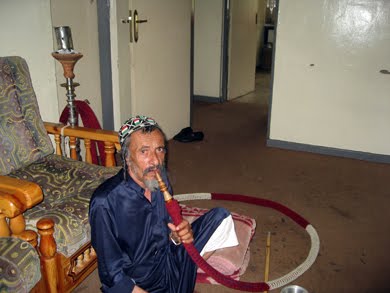Modern research on the Jewish Kingdom of Saudi Arabia "Himyar", indicates that the Crescent was actually a Jewish symbol!
Around 200 CE, Yehudah ha-Nasi compiled the Mishna from the various interpretative efforts and judicial compilations of the Rabbinic schools of the first and second centuries. The Roman government regarded Yehudah as their own paid government official with the status of Prefect, yet the government become increasingly antagonistic to the Jewish leadership. The government repeatedly attacked the Jewish calendar as a symbol of Jewish nationalism.
The biblical calendar required witnesses of the new moon of each new month to appear before the Sanhedrin. In 358 CE, Emperor Theodosius forbade the Sanhedrin to assemble in reaction to previous Emperor Julian’s pro-Jewish stance. An arithmetic Jewish Calendar was adopted at clandestine and perhaps the Sanhedrin’s last meeting. Growing disunity over fixing of the Jewish calendar between the Jews of Syrian Antioch and of Palestine compelled the patriarch or Nasi, Rabbi Hillel II, to publish the astronomical calculations for regulation of the Jewish calendar. The Jews of Arabia, however, did not accept this ruling. They continued to require human sighting of moon and stars. Eventually, what started out as a rabbinic argument led to the use of crescent as an identifying political symbol. This crescent moon differed from the Sabaean moon symbol, in that it was tilted by approximately 45 degrees to reflect the way the moon would be observed by a "witness" to the new moon of the coming month.
In 425 CE, Rabbi Gamliel VI, the last patriarch passed away. Rabbi Gamliel was a descendant of the Tanna, Hillel I (d. 10 C.E.), who was a descendant of King David. Rabbi Gamliel was a renowned physician and respected by the Emperor Theodosius II, however this did not prevent Theodosius II from abolishing the position of Nasi when he executed Gamliel for rebuilding synagogues without imperial permission. Gamliel died without a male heir, thus ending the last semblance of Jewish national organization in Israel.
Qusai ibn Kilab ibn Murrah (Qusayy) (c. 400–480) was the great-great- grandfather of Shaiba ibn Hashim (Abdul-Mutallib, who had a Jewish wife). He was fifth in the line of descent to Muhammad, and attained supreme power at Mecca. Qusai is amongst the ancestors of Sahaba and the progenitor of the Quraish . When Qusai came of age, a man from the tribe of Khuza'a named Hulail (Hillel) was the trustee of the Kaaba, and the Na'sa (Nasi) - authorized to intercalate the calendar. Qusai married his daughter and, according to Hulail's will, obtained these rights after him. He assembled a Sanhedrin "town hall". Leaders of different clans met in this hall to discuss their social, commercial, cultural and political problems. Under the royal permission of Abu Karib As'ad Tubba', Qusai reconstructed the Ka'aba from a state of decay, and had the Arab kahins (cohens) build their houses around it.
There were three Calendars in use in Arabia.
The mathematical calendar, imported from Babylon, used by the few Babylonian -Jewish refugees in Arabia.
The intercalated calendar used by those Jews and pro-Muslims who followed Qusai's council.
And a strictly lunar calendar used by the Jorham who refused to accept any intercalation. This strictly lunar calendar was the official calendar between the time of Hillel (358 CE) until Qusai (440 CE).
The Qur'anic Sura about the "splitting of the moon" refers to the divergence of the two calendars (intercalated and strictly lunar), in turn reflecting the split between Jews and proto-Muslims. The strictly lunar calendar was eventually reinstated in 622 CE, but the 45 degree crescent moon continued to symbolize the primacy of the Quraish, much as the dove symbolized the Tubba (Tobiad) kings of Himyar.
There is no doubt that the founders of Islam saw themselves as "true Jews", and offered their religion as an alternative form of Judaism. Islam was more similar to Judaism during the first two generations than it is today.
For more info, see "The Prophet Mohammed, a Jewish pseudo-Messiah"
This page was produced by Joseph E. Katz
Middle Eastern Political and Religious History Analyst
Brooklyn, New York
E-mail to a friend
Subscribe to:
Post Comments (Atom)

No comments:
Post a Comment